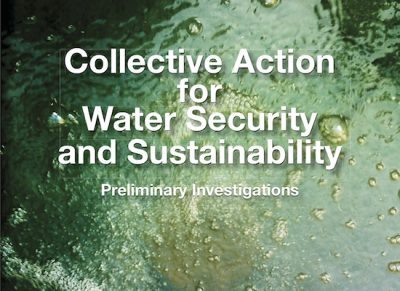Primary Functions
- Understand what produces and what hinders collective action at the basin or subbasin level based on collective action in India at different hydrological scales.
Detailed Description
Over the years, water resources in India have witnessed quality deterioration, volumetric reduction, business risks, and worsening equity, social costs and ecological degradation. The current arrangements and principles of water management are reductionist. In other words, most of the initiatives involve one or two stakeholders, such as government and multilateral donors, or private sector and civil society. Seldom are initiatives inclusive of all stakeholders. The underlined institutional frameworks are fragmented and not synchronised, resulting in ineffective governance, mismanagement and wastage of water resources. In order to build a structure for water management, which can adhere to socio-economic realities, collective action is an imperative. Examples of collective action for water management do exist at the micro-watershed level in India, presenting opportunities for further learning. The principle problem, however, is the lack of such initiatives at basin and sub-basin levels. The study asks:
- How could successful interventions for water security be scaled up?
- Under what conditions do seemingly disparate groups, with conflicting interests, come together to resolve water problems?
- How could one-off motivations be sustained over time and across geographies?
In order to address the aforesaid questions, the Council on Energy, Environment and Water (CEEW) collaborated with the 2030 Water Resources Group (2030 WRG) to study the factors for collective action in India at different hydrological scales. This study derived its motivation from the preliminary investigation conducted for the National Water Platform in India, published by CEEW and 2030 WRG in 2013. An assessment of existing water networks confirmed the absence of a structured and systemic multi-stakeholder dialogue in India to bring together different partners, specifically for demand-side management. Detailing how water decisions are structured in India, the study highlighted the role and relationship between four major actors in the country’s water ecosystem—the government, the civil society, the industry sector, and bilateral and multilateral donors. Interdependencies and insecurities among these four actors at varying hydrological scales have obstructed collective cross-sectoral efforts for sustainable water management. It is against this backdrop that the emphasis for the current study was laid on analysing the factors for successful collective action practices in India for achieving water security and sustainability.





